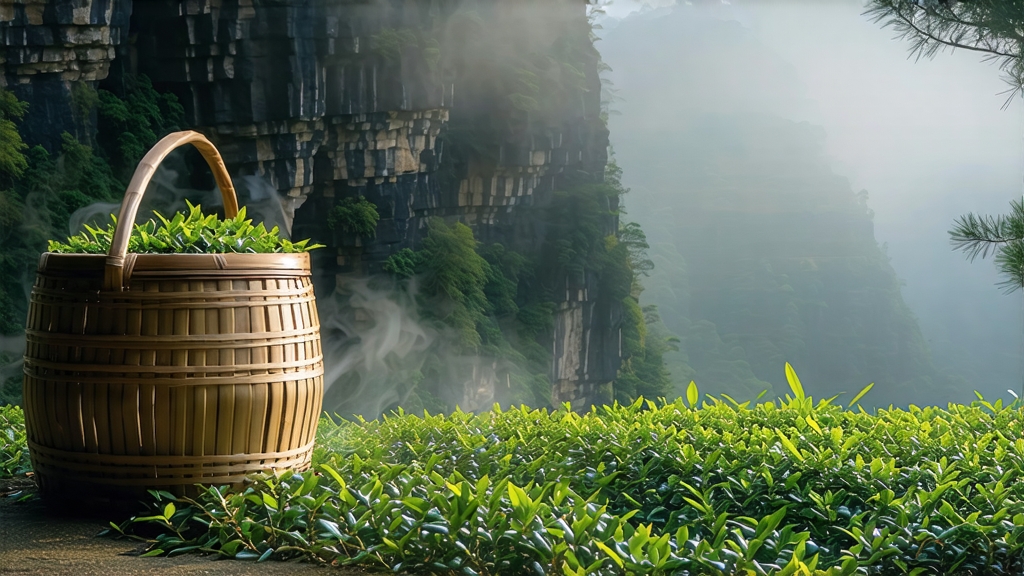
Ask most tea lovers to name China’s boldest black tea and they will answer “Lapsang Souchong.” Few realize that this assertive, campfire-scented leaf from the Wuyi Mountains of Fujian Province is not only the world’s oldest recorded black tea but also the catalyst that launched the global craze for fully oxidized teas in the seventeenth century. From the courts of the Qing emperors to the breakfast tables of Victorian London, Lapsang Souchong has carried the aroma of pine and the minerality of volcanic rock across continents. Understanding its story is to hold a smoky mirror to the history of world trade, horticultural science, and the art of living slow.
Historical Roots
The tea gardens of Tongmu Guan, a protected enclave inside the Wuyi UNESCO World Heritage site, sit at 800–1,200 m above sea level. Here, the humid subtropical air collides with cool mountain drafts, encouraging slow leaf growth and concentrating aromatic compounds. Local legend dates intentional black-tea production to 1568, when passing soldiers commandeered a tea master’s fresh green leaves. To save the harvest from spoilage, he rushed the withering over open pine fires, inadvertently oxidizing the leaves fully and scenting them with resinous smoke. The resulting tea, brisk and long-lasting, traveled with Dutch merchants to Europe in 1604, where it was christened “bohea” (from the Fujianese pronunciation of “Wuyi”) and became the status symbol of the age. By the late Qing, Lapsang Souchong accounted for over 80 % of China’s tea export, financing porcelain, silk, and even the indemnities of unequal treaties. Thus, a serendipitous mistake shaped geopolitics and morning rituals alike.
Terroir and Cultivars
True Lapsang Souchong is made only from the xiao zhong (“small leaf”) sub-species of Camellia sinensis var. sinensis, notably the indigenous Wuyi Qizhong and Wuyi Caicha bushes. These shrubs cling to narrow terraces of weathered tuff and granite, their roots diving into seams of iron-red soil laced with quartz. The diurnal temperature swing of 10–15 °C causes the leaves to thicken their cuticles, storing more malic and citric acids that later translate into a sweet, dried-longan note beneath the smoke. Gardens are inter-planted with towering Masson pines and cedar; fallen needles carpet the ground, releasing terpenes that the tea bushes absorb through their stomata, pre-scenting the raw leaf long before harvest.
Harvest Calendar
Plucking follows the solar term qingming (early April) for the premium grade known as “Original Spring,” and again at guman (early May) for the stronger “Secondary Spring.” Only the unopened bud plus the first two leaves are taken, ideally before 10 a.m. while dew still glistens. Experienced pickers look for a slight purple edge on the bud—an anthocyanin signal that catechins are at peak concentration, ready to oxidize into theaflavins and lend a brassy brightness to the cup.
Crafting the Smoke: Two Styles
Tongmu artisans still distinguish between two processing philosophies: the traditional “Smoke-Dried” (zhengshan xiao zhong) and the modern “Unsmoked” (wuyi xiao zhong). Both begin with identical steps—withering, rolling, enzymatic oxidation, and primary drying—but diverge at the final stage.
- Withering: Leaves are spread 3 cm deep on bamboo screens set over water-heated channels (wen qiao) or, in the oldest sheds, over smoldering pine embers (re qiao). The latter imparts an initial whisper of smoke while reducing moisture to 60 % over 8–10 h.
- Rolling: A 55-min mechanical rolling bruises cells and releases juices; the leaf coils into tight strips the width of a chopstick.
- Oxidation: Rolls are nested in rattan baskets, covered with wet cloth, and left in a 24 °C, 85 % humidity chamber for 3–4 h. Color shifts from jade to copper to obsidian; a fruity aroma reminiscent of ripening plantains emerges.
- Primary Drying: Tea is flash-baked at 110 °C for 10 min to arrest oxidation at